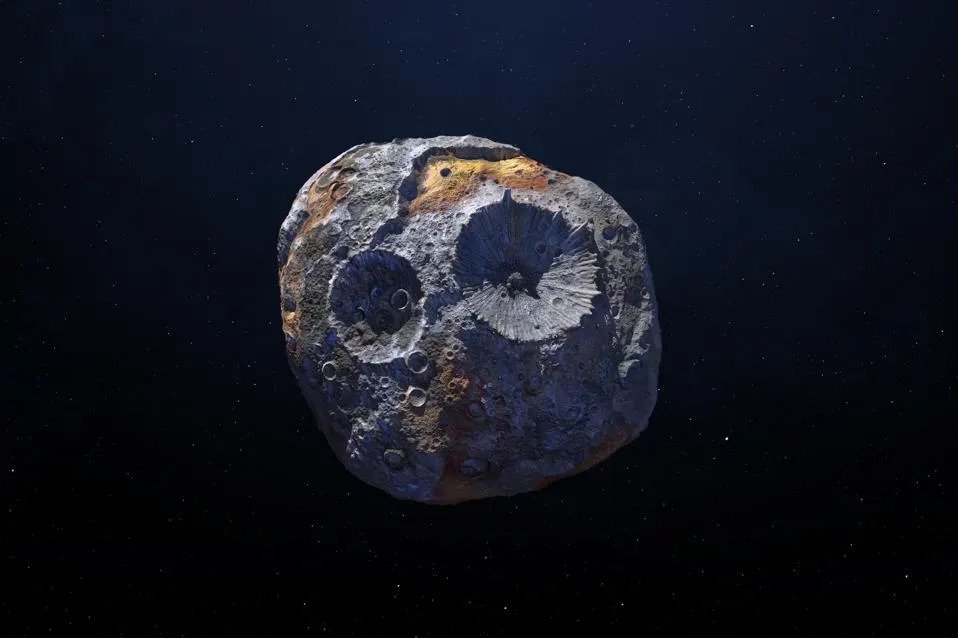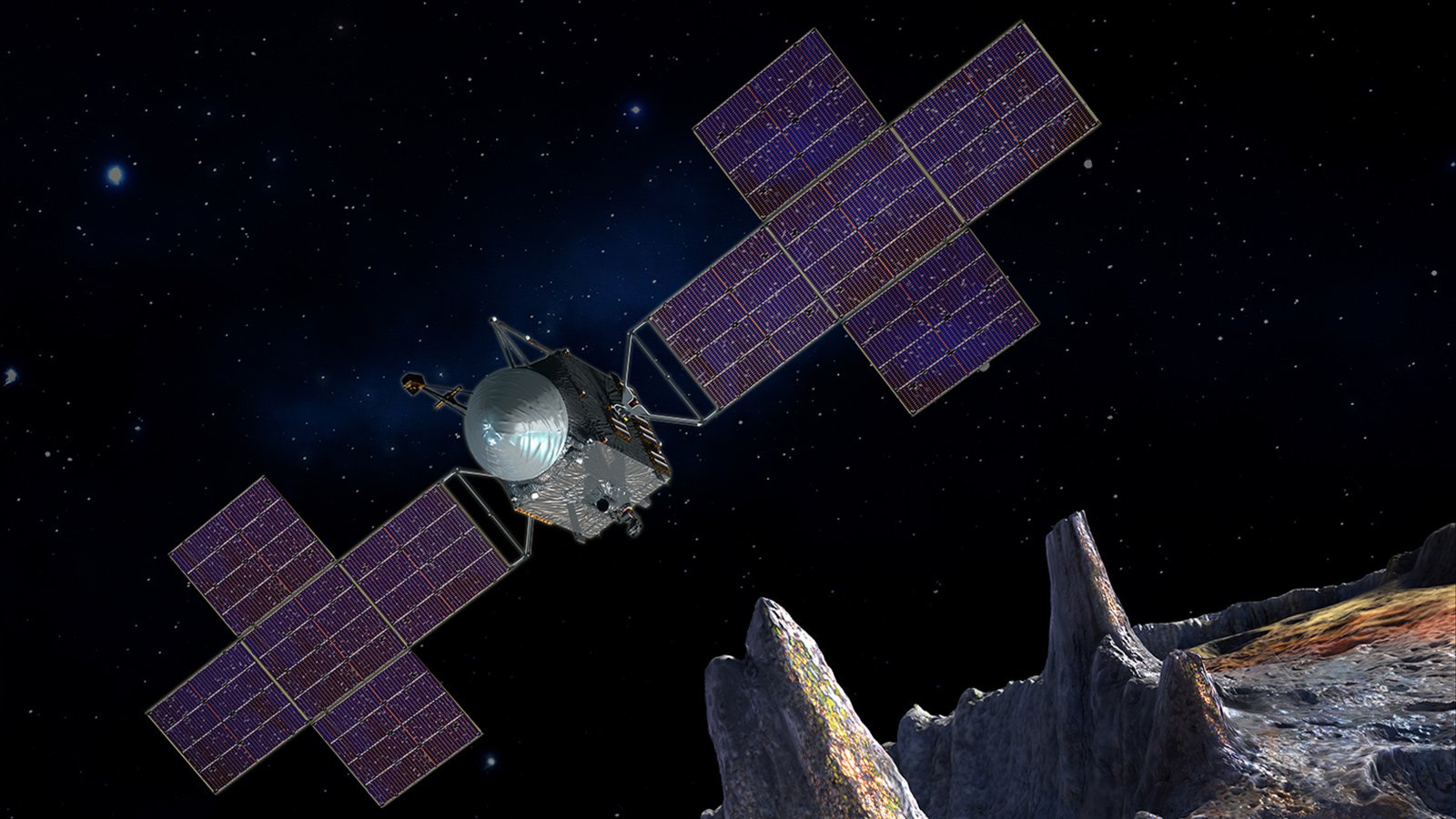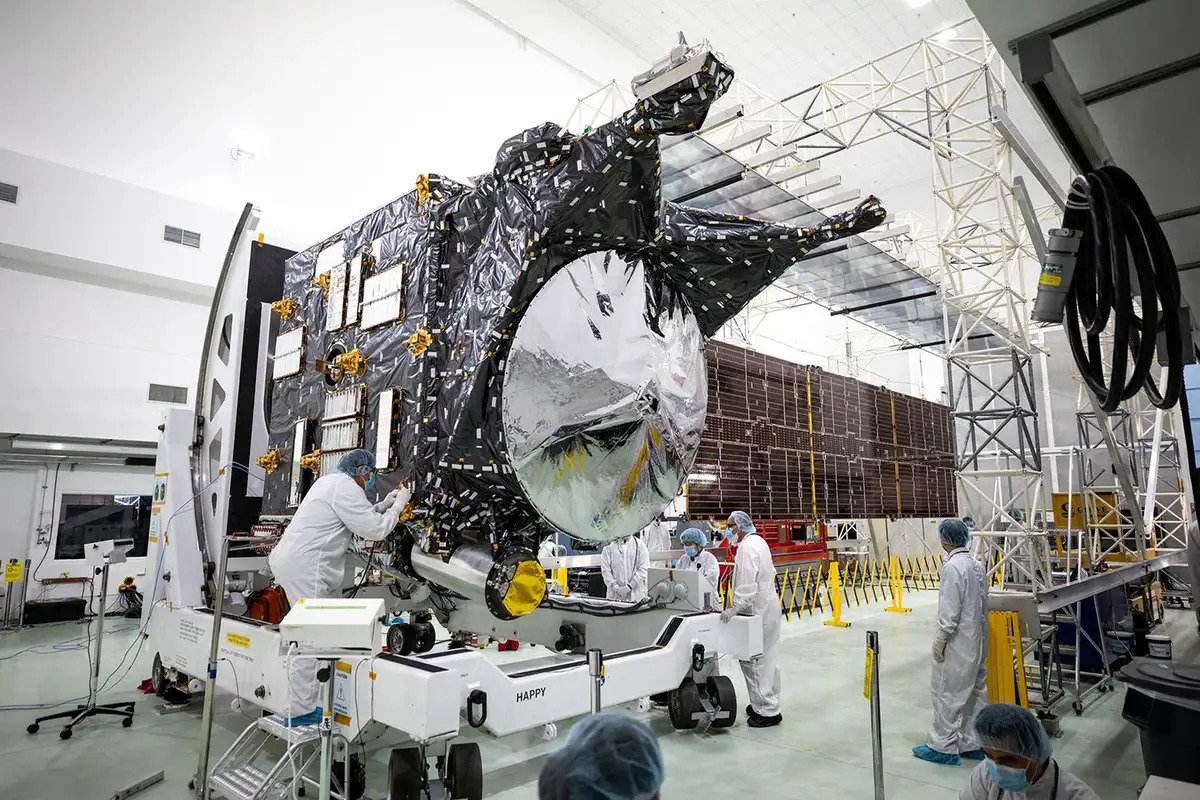NASA's Psyche Mission To An Earth-Like Asteroid Will Launch Next Week
NASA's Psyche mission to an earth-like asteroid will launch next week on a highly captivating expedition. While it may not be akin to an Earth-saving heroic, its mission holds the potential to unveil the economic significance of a metal-rich space rock.
Author:Hajra ShannonReviewer:Paula M. GrahamOct 09, 2023393 Shares39.2K Views

NASA's Psyche mission to an earth-like asteroid will launch next weekon a highly captivating expedition. While it may not be akin to an Earth-saving heroic, its mission holds the potential to unveil the economic significance of a metal-rich space rock.
The mission is centered around the exploration of an asteroid named 16 Psyche, which has been in existence for an astonishing 4.5 billion years. Scientists believe this asteroid may contain vast reserves of iron, nickel, and gold, collectively valued at an astounding sum exceeding $10,000 quadrillion (£8,072 quadrillion).
This immense wealth could potentially make every person on Earth a billionaire, although it's important to note that, even if NASA confirms the asteroid's riches, there are currently no intentions to harvest these precious metals.
Nonetheless, as the Psyche spacecraft prepares to embark on its journey into space next week, here is a comprehensive step-by-step guide to provide you with all the essential information you need to know about this six-year mission.
The Launch
The orbiter is set to hitch a ride into space aboard a SpaceX Falcon Heavy rocket, with liftoff scheduled from Pad 39A at Kennedy Space Center in Florida at 10:16 ET (15:16 BST) on October 12. Originally planned for October 5, the launch was postponed by a week to allow engineers to make necessary updates to the configuration of the Psyche spacecraft's thrusters.
Approximately one hour after the launch, the Falcon Heavy's upper stage will release Psyche, commencing its voyage toward the primary asteroid belt in our solar system. In the event of any unforeseen issues that might prevent the spacecraft's launch on October 12, the mission team will have until October 25, when the launch window closes, to reschedule.
How To Watch It
Next week, NASA plans to provide live-streaming coverage of the launch. The pre-launch coverage, without commentary, will commence at 09:15 ET (14:15 BST) on NASA's TV media channel.
The launch broadcast itself will kick off at 09:30 ET (14:30 BST) on NASA's YouTube, X, Facebook, and Twitch platforms, as well as being accessible through the NASA app and the space agency's official website.
In anticipation of the scheduled launch, NASA will conduct a mission and science briefing on October 10 at 12:00 ET (17:00 BST), followed by a pre-launch news conference on the day before launch at 13:00 ET (18:00 BST). These events can be viewed on NASA TV, the NASA app, and the space agency's website.
Humans On Board
For this particular mission, we'll need to exercise patience and await the arrival of Artemis II next year to witness astronauts embark on a voyage beyond the International Space Station. Artemis II will feature a four-person crew, consisting of Christina Koch, Victor Glover, Reid Wiseman, and Canadian astronaut Jeremy Hansen, who will undertake a 10-day expedition around the moon.
This mission serves as a preparatory step for NASA's ambitious plan to return humans to the lunar surface by 2025 under the banner of Artemis III. During this historic mission, the first woman and the first person of color will set foot on the moon, marking a significant milestone in space exploration.
The Orbiter's Destination
The spacecraft is poised to embark on an extraordinary six-year journey spanning a staggering 2.2 billion miles (3.6 billion kilometers) to reach its destination: the asteroid named 16 Psyche. This enormous asteroid, measuring approximately 170 miles wide (280 kilometers), resides within the primary asteroid belt nestled between Mars and Jupiter. Remarkably, no previous spacecraft has ever ventured to an object quite like 16 Psyche, but if all goes according to plan, the orbiter is slated to reach its destination in July 2029.
Notably, this asteroid is situated roughly three times farther from the sun than Earth. However, due to the differing orbital speeds of Psyche and Earth, the distance between us and this celestial body can fluctuate from just under 186 million miles to over 372 million miles. What sets the Psyche spacecraft apart is its employment of a highly efficient propulsion system, a first of its kind to be used beyond lunar missions, as NASA has elucidated.
"Psyche's system harnesses energy from large solar arrays to create electric and magnetic fields," the space agency said.
"These, in turn, accelerate and expel charged atoms, or ions, of a propellant called xenon (a neutral gas used in car headlights and plasma TVs) at such high speed, that it creates thrust. The ionized gas will emit a sci-fi-like blue glow as it trails behind Psyche in space," the space agency added.
NASA has stated that each of Psyche's four thrusters when activated individually, will generate a force equivalent to the sensation of holding three coins in the palm of your hand.
"In the frictionless void of space, the spacecraft will slowly and continuously accelerate," the agency added.
What Is 16 Psyche?
The asteroid 16 Psyche, which possesses an irregular, potato-like shape, is believed to represent the exposed core of a disintegrated protoplanet, the fundamental building blocks of celestial bodies like our Earth.
Researchers suggest that this space rock likely endured numerous violent collisions, a common occurrence during the early stages of our solar system's formation. In the chaotic process of these collisions and the merging of smaller planetesimals, larger objects formed and initially existed in a completely molten state.
During this phase, heavy metals gravitated towards the core, while lighter rocky material floated to the surface. However, in the case of 16 Psyche, NASA's hypothesis is that it experienced yet another collision with another asteroid after reaching this molten state. This collision effectively stripped away its rocky mantle, leaving behind a bare metal core, which is what we observe today.
Spectroscopic examinations and radar observations have indicated that its surface primarily consists of nickel and iron, making up as much as 95 percent of its composition, a similarity to the core composition of our Earth.
Remarkably, 16 Psyche was just the 16th asteroid ever to be identified, first spotted by Italian astronomer Annibale de Gasparis in 1852. This asteroid boasts an average diameter of approximately 136 miles (220 kilometers) and constitutes around 1 percent of the total mass within the asteroid belt, which equates to a staggering 440 billion billion pounds (220 billion billion kilograms).
As a result, 16 Psyche ranks among the 12 largest minor planets orbiting the sun within the region between Mars and Jupiter. However, despite its rich metallic content, it's important to note that 16 Psyche bears no resemblance to the precious gemstones found in a typical jewelry store.
"I would love for it to look like a shiny, polished, what's called a pallasite meteorite — with the shiny silver metal and the beautiful gold and green jewel-like silicate minerals in between, but it's not going to look like that. Because no one's been onto Psyche, cut it open and polished it," said Lindy Elkins-Tanton, the mission's principal investigator.
She added: "It's been hanging out in space, getting solar wind hitting it for a really, really long time. So the surfaces are not likely to be shiny."
Bringing Down The World's Economy
Should 16 Psyche indeed contain substantial quantities of valuable metals, it could represent an astronomical fortune, as estimated by Dr. Linda Elkins-Tanton, a space scientist at MIT. Her calculations suggest that the iron content within 16 Psyche alone could be valued at an astonishing $10,000 quadrillion (£8,072 quadrillion).
However, it's important to emphasize that this scenario remains purely speculative and hypothetical. Assuming that the market for asteroid materials was on Earth, the implications could be profound. Such an influx of precious metals could potentially lead to a dramatic drop in their market value, jeopardizing the worth of various assets, including those held by governments and companies engaged in mining, distribution, and trade of such resources.
In an extreme scenario, this situation could even trigger an economic crisis of global proportions. Nevertheless, it's crucial to note that these are all conjectures, as there are currently no concrete plans to bring 16 Psyche or its potential riches back to Earth, making the entire premise theoretical at this point.
The Cost Of The Mission
In total, NASA anticipates that the Psyche mission will incur an expenditure of approximately $1.2 billion (£988 million). Within this budget, roughly $677.1 million (£485.9 million) is allocated for spacecraft development, while $112.7 million (£89.4 million) is earmarked for the launch, and $171 million (£140.1 million) is designated for mission operations throughout its six-year duration. The dimensions of NASA's probe measure 81 feet (25 meters) in length and 24 feet (7 meters) in width, akin to the size of a tennis court when its solar panels are fully extended.
What Is The Psyche Mission Going To Do?
The Psyche mission marks a significant milestone as the first exploration of an asteroid whose surface is predominantly composed of metal, rather than the more common rock or ice.
As previously mentioned, NASA's belief that this space rock could be primarily composed of metal, possibly originating from the core of a planetesimal, holds the potential to provide invaluable insights into the formation of rocky planets in our solar system, including Mercury, Venus, Earth, and Mars.
Conventional wisdom suggests that rocky planets possess dense metal cores beneath their surface magma layers. However, these cores are deeply concealed beneath the mantle and crust of such planets, making direct measurement and study challenging.
This is where the Psyche mission takes center stage, as it is anticipated to unveil new possibilities. Scientists speculate that Psyche could represent the exposed core of an early planetary body. Equipped with a range of instruments, including two high-resolution cameras and a spectrometer for assessing the asteroid's composition, Psyche also features a magnetometer to investigate the presence of a residual magnetic field and an instrument for measuring its gravitational field.
Over the course of 21 months, the spacecraft will meticulously orbit the asteroid, capturing unprecedented images of Psyche. The overarching goal is that this comprehensive mapping and study of the asteroid will provide crucial insights into its formation process.

Hajra Shannon
Author

Paula M. Graham
Reviewer
Latest Articles
Popular Articles

